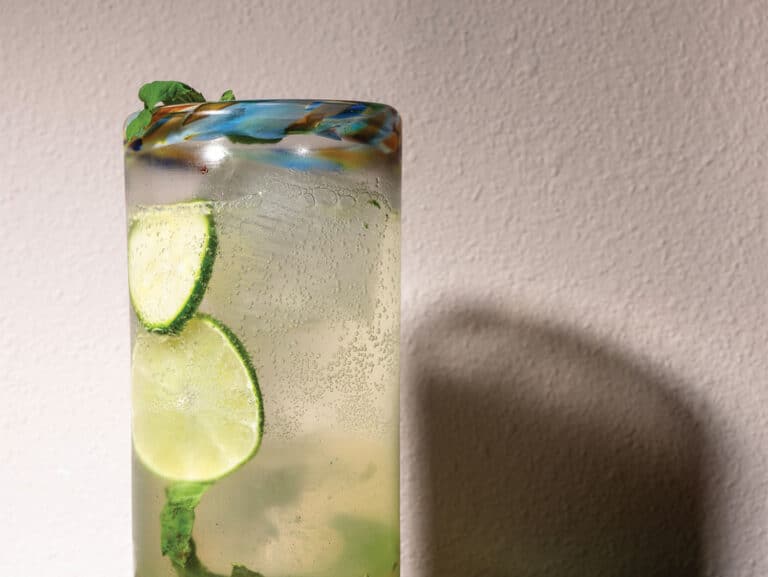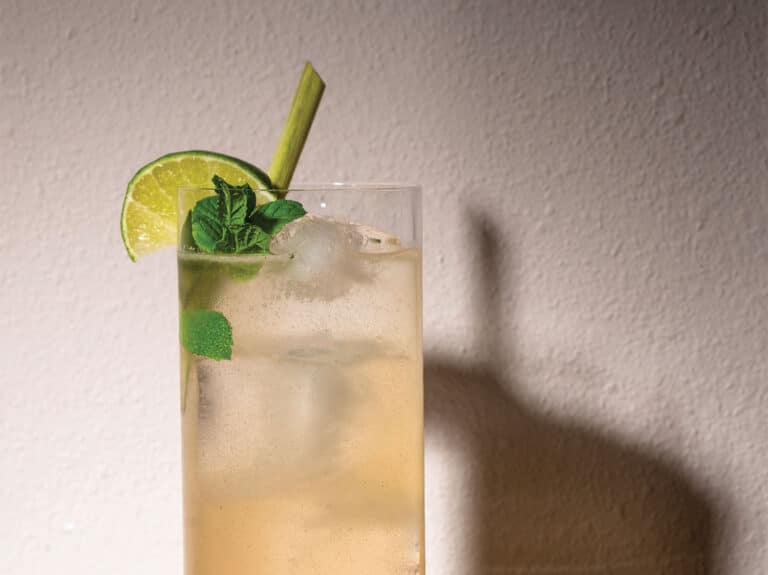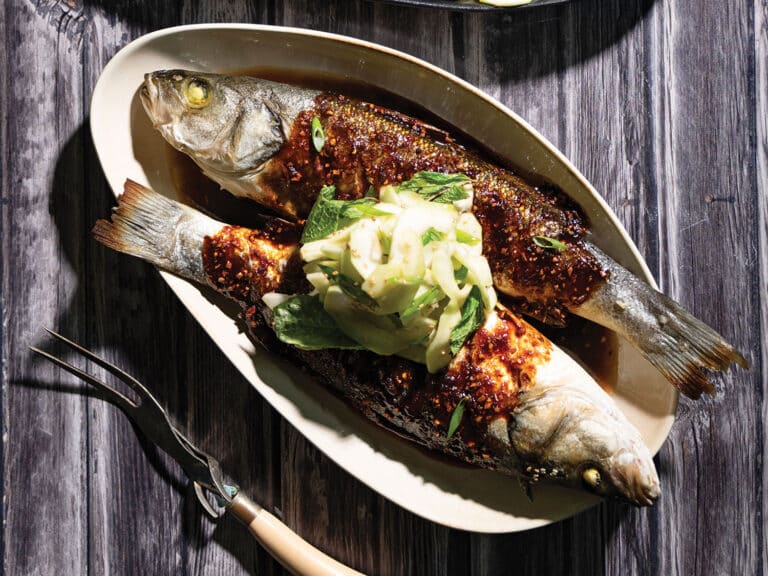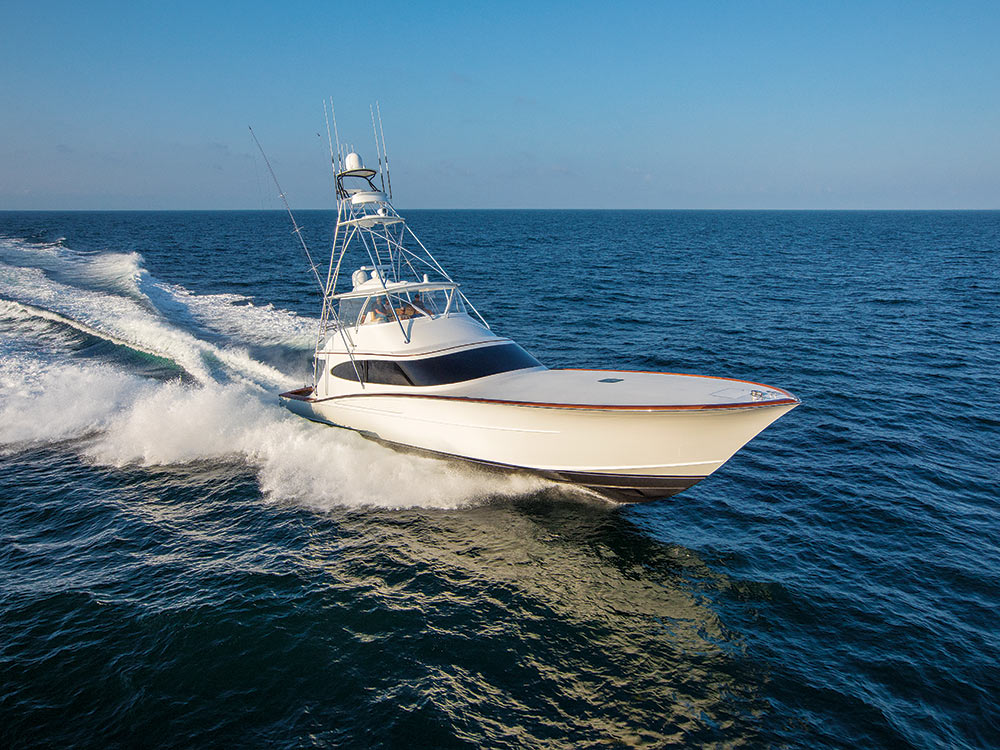
A billfish lives its life as an opportunist, and will use every advantage to snag its next meal and survive the day without becoming dinner for something else. Fishermen share a similar attitude toward success, and much of their ingenuity is incorporated into the way we outfit the boats from which we fish, especially the cockpit and the helm. These two critical areas of a sport-fishing boat not only show form following function, but also why a properly rigged sport-fisherman leaves chance at the dock.
The Center of the Action
The cockpit is ground zero, where the anglers and crew share fame, fortune and those heart-stopping adrenaline rushes when the fish of a lifetime decides to eat. However, the basic layout of the cockpit and its features are essential to success, starting from the sole up. Teak decking provides sure-footedness and reduced glare, but a grippy molded fiberglass or painted sole is fine too. Take a close look at the deck itself: Hatch pulls and hinges need to be flush, easy to grab, and pose no threat to snagging lines or leaders, or of stubbing toes. Locking hatch pulls and thick gasket material are indicators of a thoughtful design, protecting the interior contents against air and water intrusion. Gas struts enable the hatches to remain open on their own while protecting against jammed fingers and hands; hatch gutters should be wide and deep enough to remove water quickly, and all drains should be directed overboard, never into the bilge. Equally important, a cockpit sole needs a modest crown to sluice water to thirsty-size scupper drains and ship it directly overboard. This is critical: A well-designed cockpit should drain water quickly and easily.
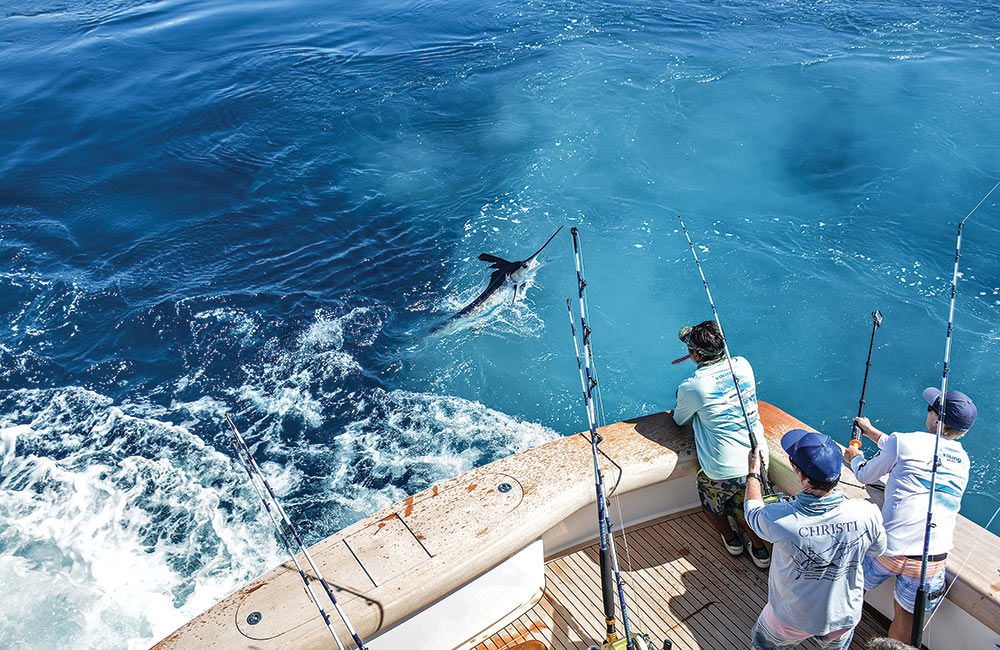
Fish, live bait and stowage wells built into the cockpit sole utilize available space, but what is located beneath each compartment is important too. Pumps, hoses, hardware and electrical accessories need to be easily accessible for routine maintenance, and in the event of an emergency. The correct placement of handles on each box can greatly reduce the effort needed to lift them out of the way for service.
Split lids are another helpful feature for the crew moving about the cockpit, allowing easy access to the contents of in-deck boxes. The deck itself must be reinforced to accommodate a through-bolted straight or offset stanchion and the appropriate fighting chair or rocket launcher. While the size of the chair is based on the available on-deck real estate, there also must be space for the crew to move around it easily in the heat of the action, even with the footrest in place. Double-check to ensure that rods can clear the corners of the cockpit from the chair too.
A transom fish box/livewell is a common accessory, and it also handles other useful chores such as stowage for loose items in the cockpit. The underside of the lid can double as a convenient cutting board, but it should have a replaceable insert to prevent damage to the actual lid. Many captains opt for a glass front to observe the health of the bait swimming inside and to easily verify pump operation. A popular companion to the transom box/livewell is a below-deck manifold that supplies water to a series of tuna tubes. These tubes are easily installed and removable when not needed for holding live bait. The transom baitwell, as well as additional livewells, must be designed with a redundant pump system to ensure unobstructed water flow. When auxiliary portable live-bait tanks are used in addition to the main livewell, either multiple pumps or a single large pump with a manifold to direct the flow of water is employed.
But always in the case of a single pump, the system should be plumbed with a second standby pump to protect the bait in case of a failure.
Be sure to check the drainage in order to keep the deck clear of overflow. Whether the water flows directly into the scuppers or out through dedicated drains doesn’t matter as long the program minimizes water on the cockpit sole. Adjacent to the transom fish box on many boats is an outward-opening transom door to facilitate the landing of large tuna or marlin. Some boats are outfitted with a lift gate that folds up and over the coaming, but this is typically better used for safer dockside boarding: Pulling a large fish into the boat with an open gate is chancy for any crew near it.
The Next Level: Mezzanines
Mezzanines are a popular cockpit adaptation for modern sport-fishing boats as well as one of the most popular renovations done on older vessels in boatyards around the world. At first glance, what appears to be a seating area is actually some clever engineering design with form and function. The typical mezzanine features two tiers: The upper level with seating provides a comfortable lounge area with sun and spray protection provided by the flybridge overhang; the overhang is also a convenient location to mount an aft-facing video camera. The mezzanine’s secondary level is one step up from the cockpit sole. Built into each level is an abundance of useful amenities for both creature comfort and fishing.
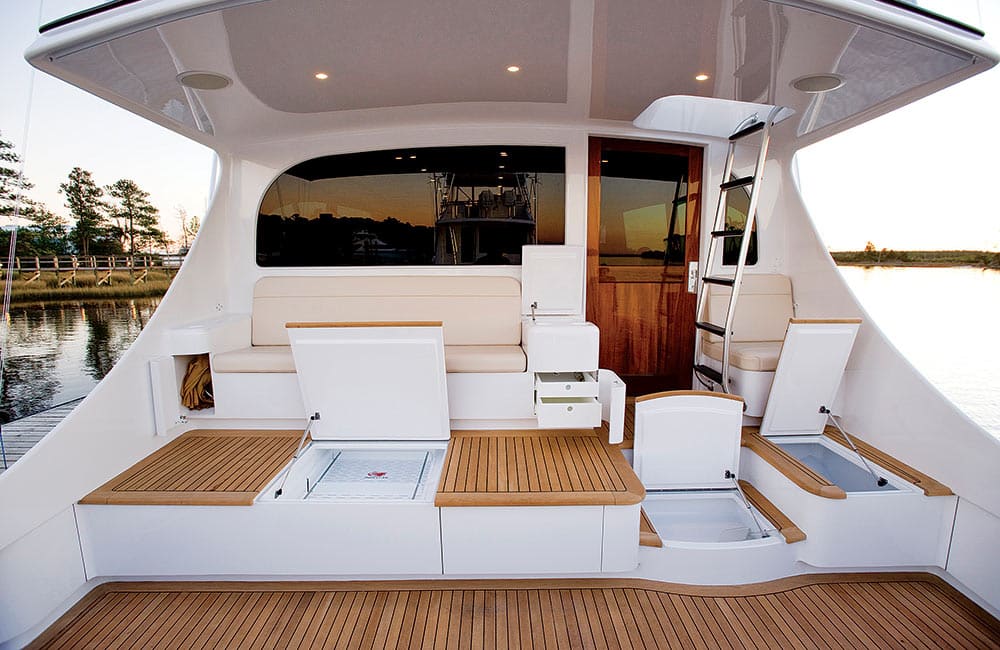
Inside the base of the upper level, which is accessed by lifting the removable cushions, are deep compartments for gear stowage, fishing tackle and usually a freezer. The lower level is generally more utilitarian, with undermounted high-capacity freezers and more compartments for tackle stowage, a drink box cooler and an insulated reservoir for the ice maker. Everything is close at hand, and savvy crews take advantage of the convenience to stow items on an as-needed basis.
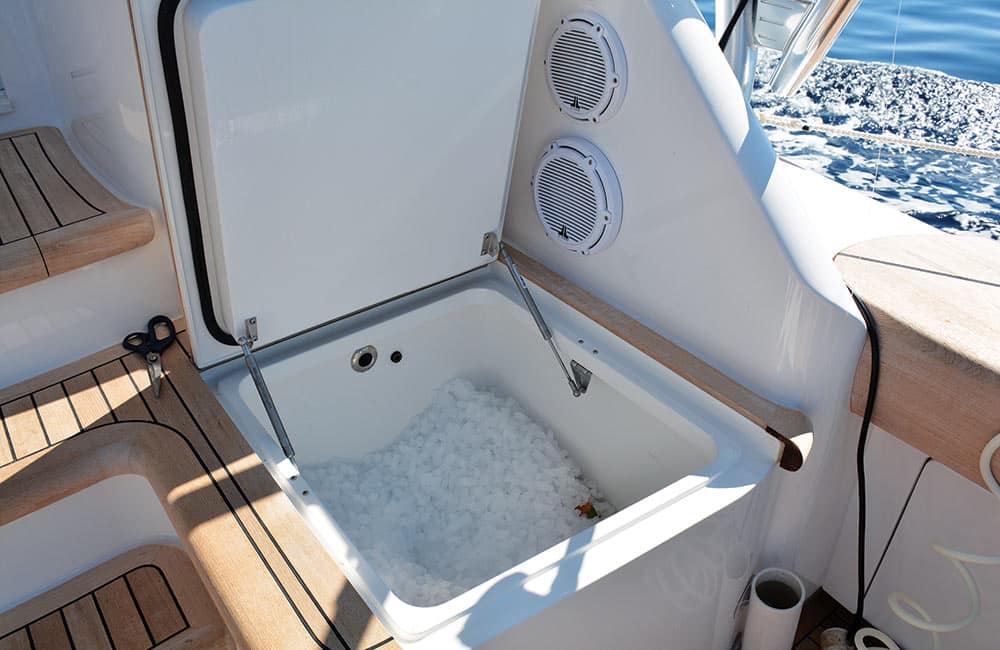
Similarly, the mezzanine’s stowage layout helps keep the cockpit clutter-free and easier to maneuver around when fishing and underway. Even the mezzanine wing is useful: It’s a prime location to install a fish finder display to give the anglers and crew one more bit of useful information about what’s happening deep below the boat. Stereo speakers installed here can also be used by the captain to calmly pass along information from his vantage point using a headset and wireless transmitter to the anglers below, without the need for yelling or other distractions.
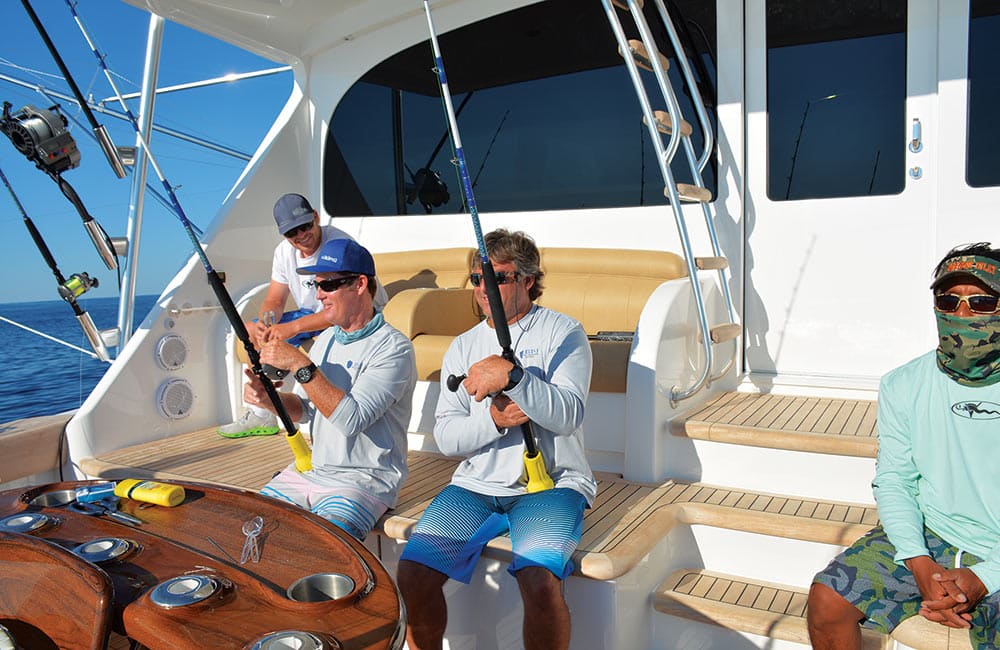
Beyond its comfort and storage capacities, the mezzanine is especially useful for crowd control. Observers can sit on the upper level and watch or film the action in the cockpit while remaining clear of the anglers and crew working lines, changing baits, or handling electric kite or dredge reels. The midlevel is a good perch for active anglers to have a great view of the baits while remaining vigilant holding a fishing rod and ready for a bite.It also gives them an opportunity to watch the anglers in the cockpit and be poised to drop back, pitch out a bait or prospect to get another shot at a missed fish, or to double up on the strikes when more than one fish is in the spread. Competitive anglers thrive in this environment, but even when fun fishing, being alert is the key to fishing success, and a mezzanine really helps in every step along the way.
 |
Subscribe Now and Save 68% |
The Captain's View
The flybridge is the nerve center of a modern sport-fisherman. While bridge size and shape are dictated by the length and beam of the vessel, its purpose blends an abundance of features, which have been relentlessly honed by naval architects, boatbuilders and the captains who’ve spent years behind the wheel. Each builder adds their signature features and options, but there is a commonality of flybridge design and style that is much appreciated by skippers and anglers alike who understand the necessity to use the space wisely for best results.
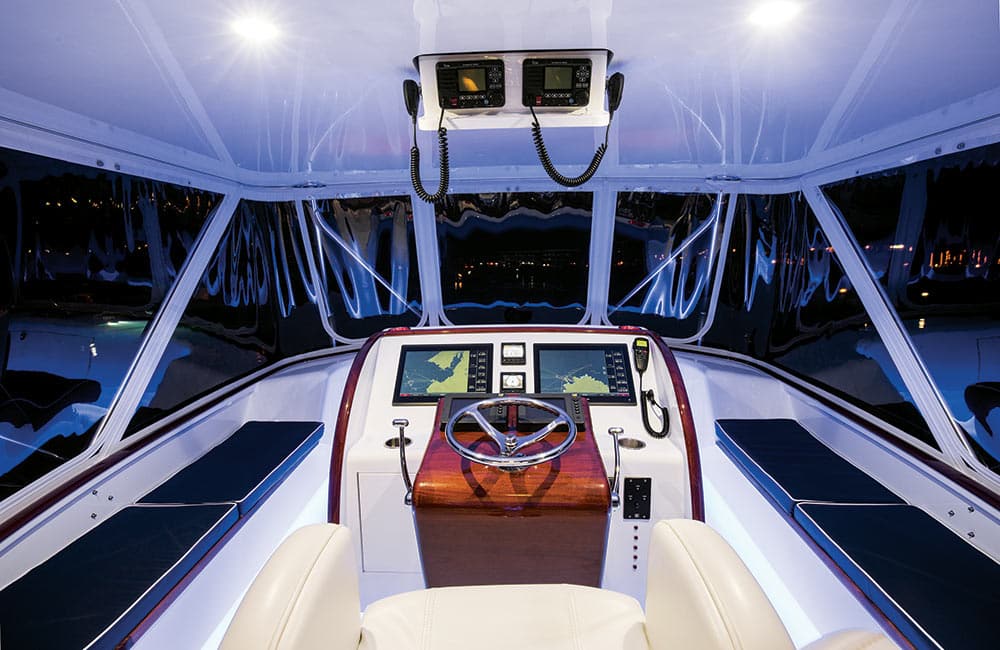
A flybridge is essentially two specific zones: The helm area is devoted to the needs of the captain, while the surrounding accommodations provide comfort and practicality for the owner and guests. A center console helm provides 360-degree visibility, ideal for running, fishing and tight-quarters boat handling. Visibility for the operator is often enhanced with a raised platform on the deck area behind the wheel, particularly when the foredeck is long, or the bridge overhang extends well back over the cockpit. The design also might include a cutout in the bridge front, often filled with a clear acrylic panel or windscreen for an unobstructed view to the bow pulpit. The captain must have good sight lines fore and aft.
An alternative design is the peninsula-style helm. Unlike the center console style with walking areas on both sides moving forward, the peninsula favors one side of the flybridge and singular access moving fore and aft, while still providing a centerline helm station. Navigation- and communication-gear installations are based on the shape of the console and the operator’s needs. A raised pod can accommodate a bank of flat screens and other instrumentation and, if placed beneath a clear acrylic panel, provides the best protection against weather and water. This design also increases the available space beneath the helm console for stowing gear, as well as providing a dry environment for the backside of the electronics and access for service or repair.
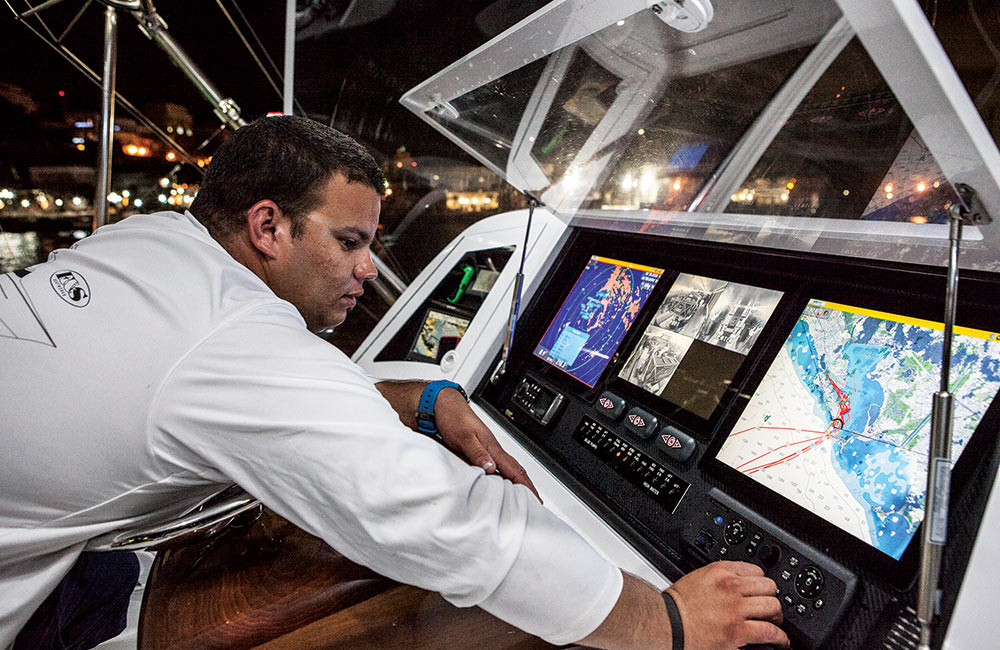
Electronic panels that rise up out of the console are another option, but this approach does expose most of the equipment to the weather and other environmental conditions. Additional space for electronics is generally available in flanking compartments on either side of the helm pod, which is also home to numerous accessory switches, VHF radios, drink holders, cellphone stowage, bow thruster, spotlight and other ship system controls. More real estate for accessories is located in the underside of the fiberglass hardtop, with drop-down boxes that open to reveal engine instrumentation, VHF radios or other electronics, as well as access to the teaser reels. Recessed lighting in the underside of the hardtop should include red lights for nighttime use.
Pedestal chairs with adjustable footrests serve the operator, with accompanying companion seating usually located on either side, depending on the size and layout of the bridge.
Similar to fighting-chair considerations, be sure there is room abaft of the chairs to move safely about when tending fishing rods at the stern bridge rail, or to raise or lower the outriggers.
The aft edge of the bridge sole should have a toe kick to keep feet on a flat, secure surface and also to direct bridge spray toward the corners to avoid showering the mezzanine below. Lounges with rod and gaff stowage space beneath them serve a dual purpose, but a third function comes into play when the lounge backrest is reversible, which creates a useful jump seat for watching baits or lures in the spread.
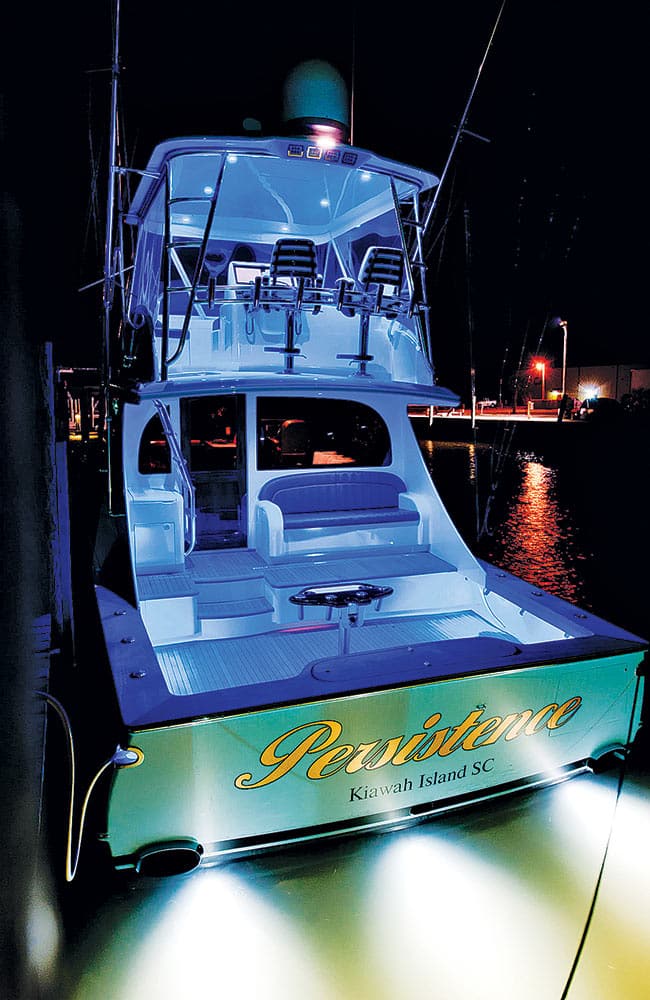
Lounges provide more functionality if compartments are built in to double as a cooler for drinks or stowage bins for loose items and trash. Arguably, the center console helm offers more versatility with lounges on both sides for seating and stowage; with a peninsula helm, the usual drill is an L-shaped lounge forward, but if the length comes up short, it might serve only for seating and limited stowage. An alternative is to better utilize the room with molded bucket-style seats, which give generous support with available stowage and drink boxes in the base.
Storage, and More Storage
The challenge of the area in front of the helm console is managing the best use of available space. By the forward brow, there is generally sufficient square footage for a freezer. For traveling boats that fish a tournament circuit or for long-range cruising, bridge freezers are often used for food and other perishables, allowing the cockpit freezers to be dedicated solely to bait storage.
The space directly in front of the helm console is another possible location for a freezer, and this often provides substantial capacity due to the height of the console itself, which creates a deep locker that can be partitioned for various items. In either location, bridge freezers are designed for minimal opening and closing in order to keep the contents in good shape.
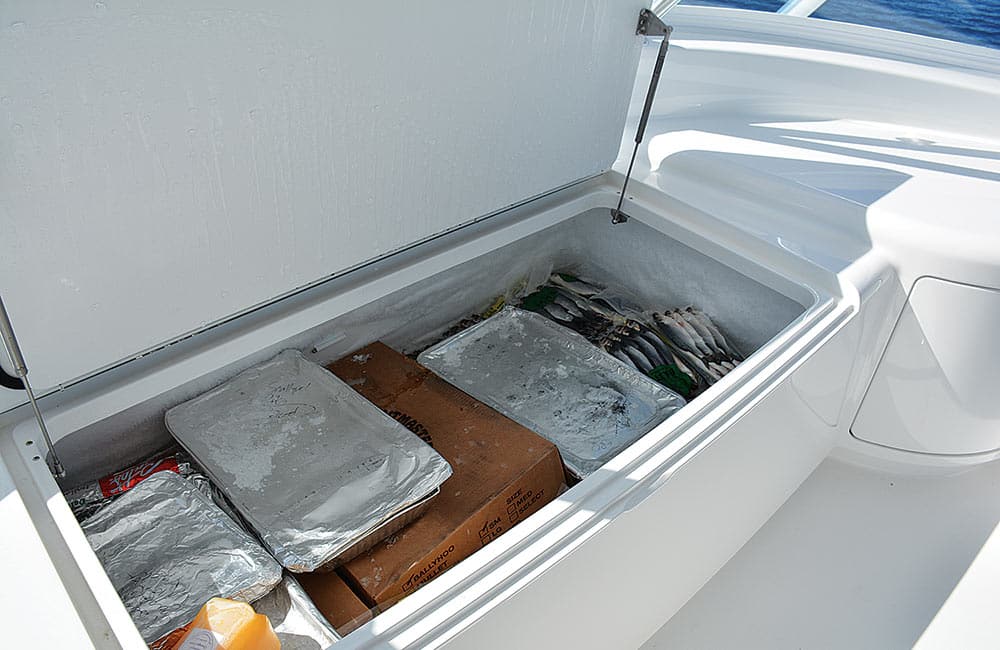
One other benefit of the freezer in front of the console is that it makes a handy location to stack those long lounge cushions when cleaning the bridge or accessing fishing rods or other equipment beneath the lounges. Another worthwhile bridge feature is a freshwater sink with an auxiliary-hose outlet to give the bridge and enclosure a thorough rinsing to remove salt on the way back to the dock. The bridge corners are another good spot for a chill box for snacks, beer, soda and water.
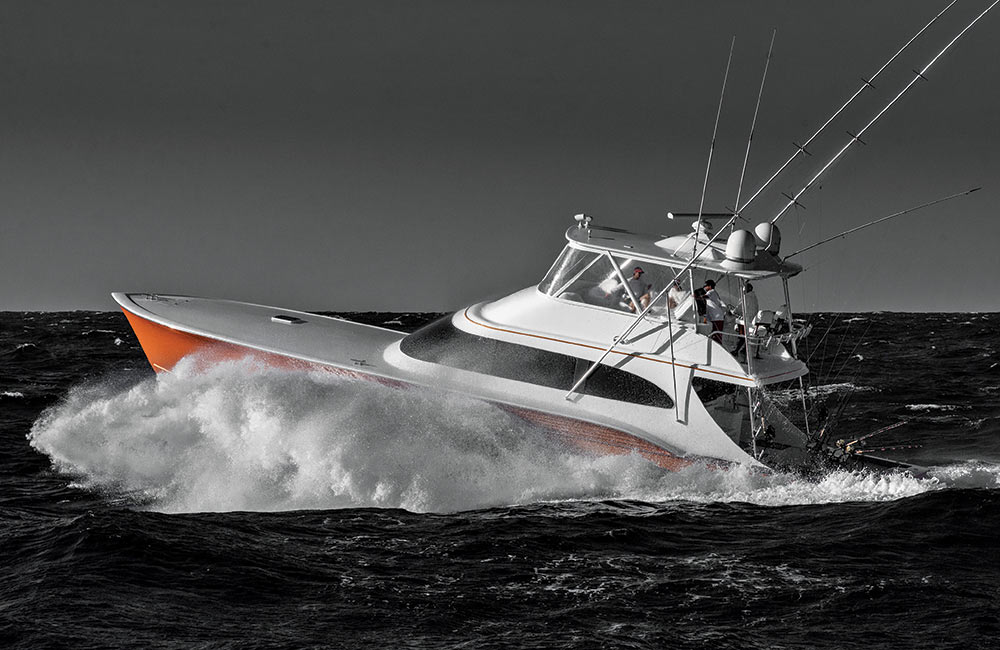
Outfitting the flybridge is always a work in progress as the captain fine-tunes it for their specific needs and wants. Overhead and other safety grab rails — and a hatch or railing around the cutout at the access point from the cockpit — are two examples. The same is true for the tuna tower helm, which at least should be outfitted with a buggy top, wraparound padded bolster, seat, electronics, engine controls, and blackened pipework to reduce glare.
The modern sport-fishermen of today are a far cry from the boats that were built even just 10 years ago. By continuing to refine the basic design elements that are common to all — helms, cockpits and more — the boats of tomorrow will continue their evolution as incredible sport-fishing machines.
About the Author: A writer, photographer and licensed operator, Peter Frederiksen can be found scouring the thousand-fathom curve for pelagics, combing the flats for bonefish, and fishing for anything in between from his home ports of Brielle, New Jersey, and Stuart, Florida.





